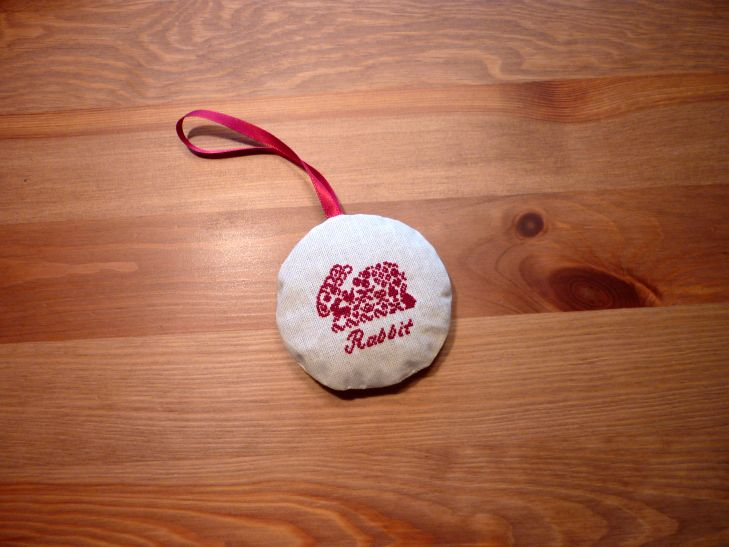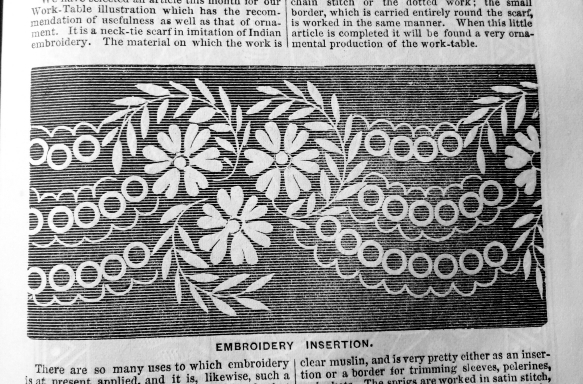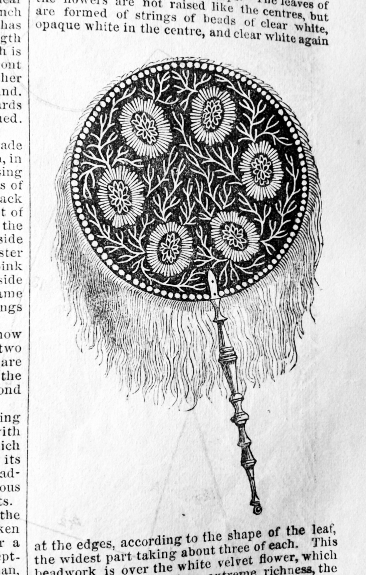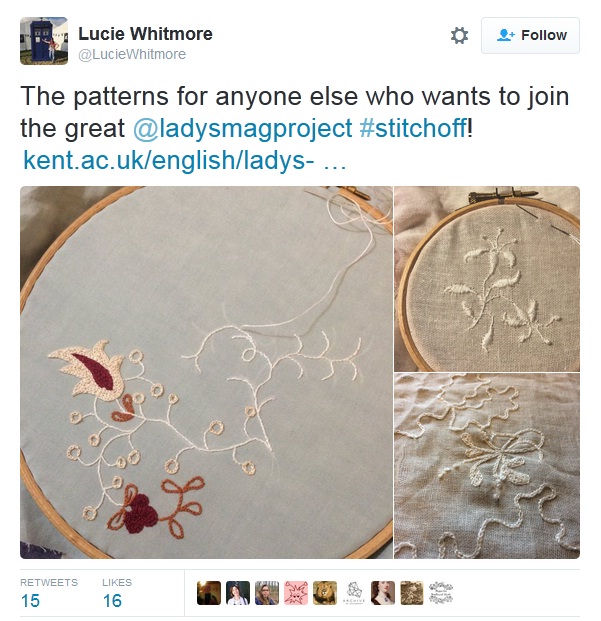I thought for today’s post, I’d elaborate a little on my February post about needlework, and talk about the social aspects of needlework. As any crafter knows, there is an immense satisfaction in gifting your work to your friends and family (especially when they actually appreciate handmade things). I love giving handmade blankets and softies to the children of my friends, and among the women of my grandmother’s generation, embroidered handkerchiefs were popular presents.
Like today, needlework often served as a means to strengthen (female) relationships in the Regency era. And in 19th-century literature this is nowhere better reflected than in Elizabeth Gaskell’s Cranford stories. They were first published in the early 1850s, but most of them are set at a much earlier date, in the 1830s and 40s, and the genteel, yet impoverished ladies of Cranford maintain rules of etiquette that are remnants from even earlier decades.
With Cranford, Gaskell entered a contemporary debate about whether women were able to form and maintain true friendships with members of their sex. As female friendships and female communities form such an important part of the Cranford stories, it perhaps not surprising that we are granted a much more detailed glimpse at the domestic life and work of women than in other literary works of the time.
In the village of Cranford it is the little kindnesses that help to maintain and strengthen the community, and those kindnesses often take the form of handmade things or homemade remedies. In Chapter 2, the narrator tells us:
I had often occasion to notice the use that was made of fragments and small opportunities in Cranford; the rose-leaves that were gathered ere they fell to make into a potpourri for someone who had no garden; the little bundles of lavender flowers sent to strew the drawers of some town-dweller, or to burn in the chamber of some invalid. Things that many would despise, and actions which it seemed scarcely worth while to perform, were all attended to in Cranford.
The women in Cranford keep in touch with absent friends by writing letters, and needlework plays an important role in forming new friendships and deepening existing ones. Thus,
Miss Pole and Miss Jessie Brown had set up a kind of intimacy on the strength of the Shetland wool and the new knitting stitches […].
And similarly, the relationship between Miss Pole and Mary, the narrator, who is only an occasional visitor to Cranford, deepens thanks to crochet:
There was Miss Pole, who was becoming as much absorbed in crochet as she had been once in knitting, and the burden of whose letter was something like, “But don’t you forget the white worsted at Flint’s” of the old song; for at the end of every sentence of news came a fresh direction as to some crochet commission which I was to execute for her.
As a result of those crochet commissions, Miss Pole invites Mary to stay with her at the beginning of Chatepr 3, and again, needlework is featured prominently:
There was all the more time for me to hear old-world stories from Miss Pole, while she sat knitting, and I making my father’s shirts. I always took a quantity of plain sewing to Cranford; for, as we did not read much, or walk much, I found it a capital time to get through my work.
When Peter, Miss Matty’s long-lost brother, returns to Cranford towards the end of the collection, he brings with him a beautiful Indian muslin gown. But because Miss Matty has grown too old for such finery, the gown is reserved for Miss Jessie Brown’s daughter and thus becomes yet another means to strengthen the cross-generational bonds. This gives us a glimpse of how fabric could become imbued with love and kinship. In Miss Weeton: Journal of a Governess 1811-1825 we find a letter from Ellen Weeton to her daughter, where she describes the bundle of fabrics she is sending along with the letter to be made into a patchwork quilt:
Print for patchwork is sold by weight, in small bits such as I have sent you. I purchased it at Prescot market […] The piece of patchwork is out of an old Quilt I made above 20 years ago […] The Hexagon in the middle was a shred of our best bed hangings; they were Chintz, from the West Indies, which my father brought home with him from one of his voyages.
As we can see, fabric was not only repurposed and passed down in the family, it could also become the carrier of family stories and histories – a process that will be no doubt familiar to many modern quilters!
And that was it from me for this month. When I post the next time, in March, I’ll have some big news to share with you, involving, among other things that cute red-haired woman below. 🙂
And now, let’s hear it from you: Do you have any kind of handmade item that is part of your family history or reminds you of a dear friend?





